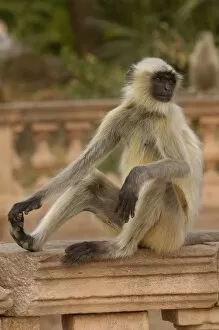Black Faced Langur Collection
The black-faced langur, also known as the Hanuman Langur or Common Grey Langur (Presbytis entellus), is a fascinating primate species found in Asia
All Professionally Made to Order for Quick Shipping
The black-faced langur, also known as the Hanuman Langur or Common Grey Langur (Presbytis entellus), is a fascinating primate species found in Asia, particularly in India. One of the most prominent locations to spot these langurs is Ranthambhore, a national park and tiger reserve situated in India. With their distinctive black faces and grey fur, these langurs are easily recognizable. They have long limbs and a slender body structure that enables them to move swiftly through the trees. Their agile nature allows them to navigate effortlessly across branches while foraging for food or escaping potential threats. Ranthambhore provides an ideal habitat for these langurs due to its diverse vegetation and abundance of food sources. Here, they can be observed swinging from tree to tree or perched on high branches, keeping a watchful eye over their surroundings. Apart from Ranthambhore, another place where one can encounter Hanuman Langurs is Mandore in India. These intelligent creatures are often seen roaming freely amidst ancient temples and historical ruins that dot this region. As social animals, Hanuman Langurs live in large troops consisting of several individuals led by an alpha male. Within these groups, they establish strong bonds through grooming rituals and vocalizations that help maintain harmony among members. While primarily herbivorous, feeding on leaves, fruits, flowers, and seeds; they occasionally supplement their diet with insects or small vertebrates when necessary. This adaptability has contributed to their survival even amidst changing environments caused by human encroachment. Despite being widespread throughout Asia's forests and urban areas in India specifically; the black-faced langur population faces various challenges such as habitat loss due to deforestation and hunting pressures. Conservation efforts are crucial for preserving this unique primate species which plays an essential role within its ecosystem.



